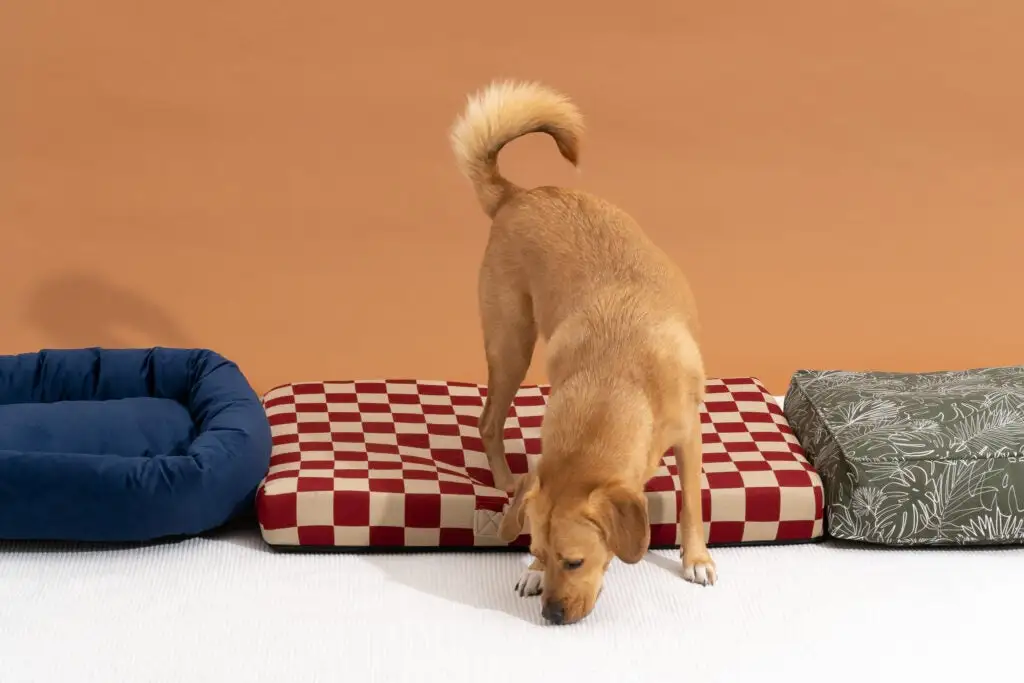Finding the best leash for dogs that pull is essential for every dog owner who knows the struggle: you’re trying to enjoy a peaceful walk, but your furry friend has other ideas. Whether they’re lunging after squirrels or simply in a hurry to explore, a dog that pulls can transform a relaxing stroll into a frustrating tug-of-war. The right leash can make all the difference, not just for your comfort, but for your dog’s safety and training progress too.
In this guide, we’ll explore the most effective leashes for dogs that pull, breaking down the features that matter most and reviewing top products that have been thoroughly tested with real-world pullers. We’ll also share expert training tips and answer the most common questions about managing leash pulling. By the end, you’ll know exactly what to look for in a leash that can help transform those challenging walks into enjoyable experiences for both you and your four-legged companion.

Table of Contents
Why Dogs Pull on Leashes (And Why It’s a Problem)
Before diving into leash solutions, it’s important to understand why dogs pull in the first place. Dogs primarily pull because:
- Natural exploration instinct: Dogs process the world through scent and are eager to investigate their environment
- Excitement and energy: Particularly in younger dogs, excessive energy can translate to pulling
- Lack of leash training: Many dogs haven’t learned proper leash manners
- Hunting or prey drive: The instinct to chase small animals can trigger sudden pulling
- Reactivity to other dogs or people: Some dogs pull when they spot potential threats or playmates
Pulling isn’t just annoying—it can be dangerous. A strong dog that pulls can:
- Cause injuries to your shoulders, back, or wrists
- Pull you off balance, leading to falls
- Slip their collar or break their leash, potentially running into traffic
- Develop throat or neck injuries from constant strain against a collar
Key Features to Look for in Leashes for Dogs That Pull
When shopping for a leash to manage a puller, these features matter most:
Material and Durability
The material should be strong enough to withstand constant tension without fraying or breaking. Look for:
- High-quality nylon: The most common and cost-effective option
- Biothane: A coated webbing that’s extremely durable and easy to clean
- Climbing rope: Provides excellent strength for larger dogs
- Reinforced stitching: Particularly at stress points like handles and clips
Length and Width
- Length: Shorter leashes (4-6 feet) provide better control over dogs that pull. Avoid retractable leashes, which can actually encourage pulling
- Width: Wider leashes (3/4″ to 1″) distribute force better and are less likely to snap under pressure
Specialized Features
- Shock-absorbing sections: Elastic or bungee components that reduce the jarring impact when your dog lunges
- Multiple handles: Secondary “traffic handles” positioned closer to the dog’s collar allow quick control in crowded areas
- Padded handles: Prevent painful “leash burn” when your dog pulls suddenly
- Reflective stitching: Important for visibility during evening walks
- Attachment options: Some leashes can be configured for use with both front and back harness attachment points
Top 5 Best Leash for Dogs That Pull Options in 2025
Let’s examine what makes these the best leash for dogs that pull options on the market today. After analyzing dozens of products and reviews, these leashes consistently rank as the most effective for managing dogs that pull:
1. EzyDog Zero Shock Absorbing Dog Leash
“Buy the EzyDog Zero Shock Absorbing Dog Leash on Amazon“
Why it stands out: The EzyDog Zero Shock incorporates specialized shock-absorbing technology that reduces the impact when your dog pulls suddenly. The leash features a neoprene-padded handle that’s waterproof and comfortable to grip, preventing painful leash burn if your dog tugs unexpectedly.
Best for: Medium to large dogs with unpredictable pulling habits, especially those who lunge after wildlife or other triggers.
Available lengths: 25″ and 48″ options, with the longer version featuring an additional traffic handle for quick control.
2. Zee.Dog Airleash
“Buy the Zee.Dog Airleash on Amazon”
Why it stands out: The Airleash uses proprietary “Flowtex” technology—an elastic webbing system that absorbs the impact from pulling, transforming sudden jerks into more manageable “bounces.” Its ultra-lightweight aluminum hardware is 3x lighter than standard clips while maintaining excellent strength.
Best for: Active dog owners who walk or jog with medium to large pullers.
Available lengths: 3.3′ (100cm) and 5′ (150cm) options.
3. ThunderLeash No-Pull Dog Leash
“Buy the ThunderLeash No‑Pull Dog Leash on Amazon”
Why it stands out: The ThunderLeash offers a unique 2-in-1 design that converts from a standard leash to a no-pull solution in seconds. When wrapped around your dog’s torso, it applies gentle pressure when pulling occurs, providing consistent feedback that discourages the behavior without requiring a special harness.
Best for: Dogs that respond well to gentle pressure feedback and owners who want simplicity without additional gear.
Available sizes: Fits all breeds from small to large.
4. Max and Neo Double Handle Heavy Duty Reflective Leash
Why it stands out: This leash features a dual-handle design with a padded primary grip and a secondary traffic handle positioned 18 inches from the clip. The reflective stitching throughout improves visibility in low light, while the durable nylon webbing stands up to constant tension.
Best for: Urban dog walkers who need quick control in crowded areas and on busy streets.
Available lengths: 4′ and 6′ options.
5. Ruffwear Roamer Bungee Leash
Why it stands out: The Roamer combines shock-absorbing bungee webbing with versatile wearing options—it can be handheld, worn around the waist, or secured to objects. The adjustable padded handle accommodates different hand sizes and wearing preferences.
Best for: Outdoor enthusiasts and adventurers who hike, run, or bike with their dogs.
Available lengths: 5.5′ to 7′ (adjustable stretch).
Beyond the Leash: Complete Solutions for Pullers
While a good leash is essential, it’s only part of the solution for dogs that pull. For maximum effectiveness, consider these complementary approaches:
No-Pull Harnesses
Pairing your leash with the right harness can significantly improve control:
- Front-clip harnesses: Redirect your dog’s momentum when they pull, turning them back toward you
- Dual-clip harnesses: Allow attachment at both chest and back points for versatile control
- Y-shaped harnesses: Distribute pressure evenly without restricting shoulder movement
Top-rated options include:
- Freedom No-Pull Harness: Features a unique design with both front and back attachment points
- PetSafe Easy Walk: A simple front-attachment harness that gently discourages pulling
- Ruffwear Front Range: Combines everyday comfort with a front attachment point for training
Training Techniques
Even the best leash won’t solve pulling problems without consistent training:
- Stop and go method: Stop walking whenever your dog pulls, only continuing when the leash is slack
- Direction changes: Randomly change direction when your dog pulls to teach them to pay attention
- Positive reinforcement: Reward loose-leash walking with treats and praise
- Consistent commands: Use clear verbal cues like “easy” or “with me” to signal the behavior you want
Even the best leash won’t solve pulling without consistent training. Techniques like “stop-and-go” (i.e., pausing until your dog releases tension) and rewarding slack‑leash behavior are crucial (see AKC’s “How to Stop Your Dog From Pulling on the Leash” for step‑by‑step guidance).
In addition to using a no-pull leash, keeping your dog mentally engaged can significantly reduce pulling behavior. Check out our guide to the best interactive dog toys for mental stimulation to help curb excess energy and improve leash manners.
Buyer’s Guide: Choosing the Right Leash for Your Specific Situation
When selecting the best leash for dogs that pull, every dog and every situation require different solutions:
For Extra-Strong Pullers
If your dog’s strength is overwhelming:
- Choose the strongest materials (biothane or climbing rope)
- Look for shock-absorbing features to reduce strain
- Consider a dual-handle design for emergency control
- Pair with a front-clip harness for maximum control
For Reactive Dogs
If your dog pulls specifically when seeing triggers like other dogs:
- Choose a shorter leash for better control
- Look for a traffic handle for quick restraint
- Consider using a training leash that can be adjusted to different lengths
- Pair with training to address the underlying reactivity
For Seniors or Owners with Hand/Wrist Issues
If you have physical limitations:
- Prioritize padded handles and shock-absorbing features
- Consider a hands-free option that goes around your waist
- Look for lightweight materials that won’t add strain
- Choose a harness that provides mechanical advantage
For Multi-Dog Households
If walking multiple pullers:
- Consider a coupler or dual-dog leash designed for two dogs
- Choose individual leashes with tangle-free features
- Look for color-coded options to quickly identify which leash belongs to which dog
FAQ: Common Questions About Leashes for Dogs That Pull
Are retractable leashes good for dogs that pull?
No. Retractable leashes can actually encourage pulling by teaching dogs that tension on the leash gets them more freedom. They also provide less control and can cause injuries when the cord suddenly extends or retracts.
Will a special leash stop my dog from pulling completely?
While a good leash can help manage pulling, it’s not a complete solution on its own. Consistent training is necessary to teach your dog proper leash manners.
How long should a leash be for a dog that pulls?
For training and control, 4-6 feet is ideal. Shorter leashes (4 feet) provide better control in busy areas, while slightly longer ones (6 feet) allow more freedom in open spaces.
Are shock-absorbing leashes worth the extra cost?
For strong pullers or dogs that lunge suddenly, shock-absorbing features can significantly reduce strain on your arms and back, making them well worth the investment.
Should I use a harness or collar with my anti-pull leash?
For most dogs that pull, a harness is safer and more effective than a collar. Collars can cause tracheal damage with constant pulling, while harnesses distribute pressure more safely.
What’s the difference between a regular leash and the best leash for dogs that pull?
The best leash for dogs that pull features specialized design elements like shock absorption, multiple handles, and stronger materials specifically engineered to manage pulling behavior and reduce strain on the handler.
Conclusion: Transforming Your Walks from Struggle to Joy
Investing in the best leash for dogs that pull isn’t just about buying a product—it’s about investing in a better relationship with your canine companion. The right leash, combined with consistent training and patience, can transform daily walks from frustrating battles into enjoyable bonding experiences.
Remember that every dog is different, and what works for one may not work for another. Don’t be afraid to try different options until you find the perfect solution for your specific situation. With the right tools and techniques, even the most determined pullers can learn to walk politely by your side.
Walking should be a pleasure, not a chore. With the information in this guide, you’re well on your way to more enjoyable, stress-free adventures with your four-legged friend, no matter how enthusiastic they might be about getting there.
Disclaimer: This article contains affiliate links. If you purchase products through these links, we may earn a small commission at no additional cost to you. This helps support our content creation and allows us to continue providing you with valuable information.

